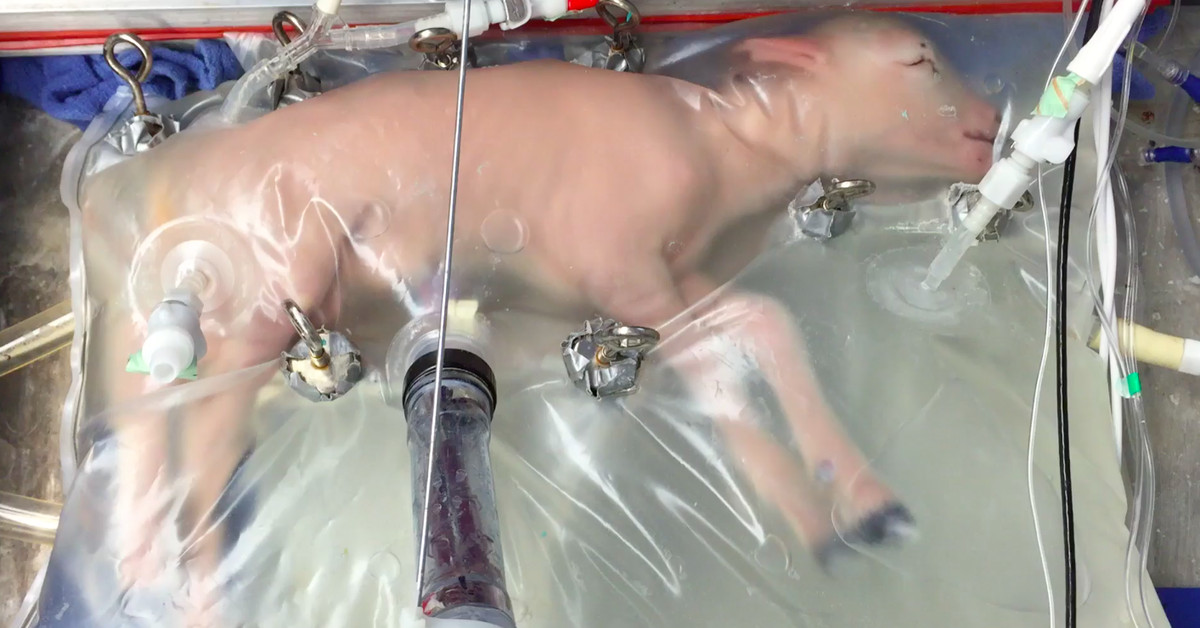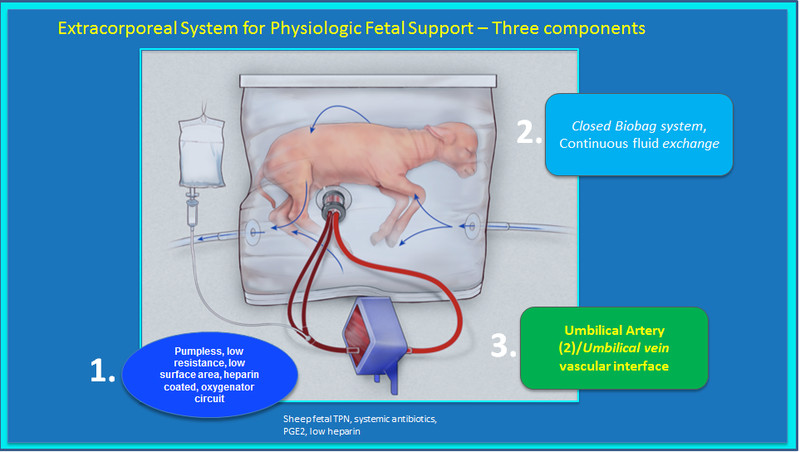“Don’t Call Me Mother,” Artificial Womb Grew Baby Sheep, Humans Next
By Heather Callaghan, Editor
Pre-term sheep spent four weeks in external, artificial wombs, that only Ziploc and Stanley Kubrick could be proud of. Are humans next?
The near future is heralded by the symbolic gesture of sacrificial lambs to the God of Science & Technology.
The Verge reports:
Inside what look like oversized ziplock bags strewn with tubes of blood and fluid, eight fetal lambs continued to develop — much like they would have inside their mothers. Over four weeks, their lungs and brains grew, they sprouted wool, opened their eyes, wriggled around, and learned to swallow, according to a new study that takes the first step toward an artificial womb. One day, this device could help to bring premature human babies to term outside the uterus — but right now, it has only been tested on sheep.
It’s appealing to imagine a world where artificial wombs grow babies, eliminating the health risk of pregnancy. But it’s important not to get ahead of the data, says Alan Flake, fetal surgeon at the Children’s Hospital of Philadelphia and lead author of today’s study.
Rather than flaunt an act of God, Flake’s announcement is surprisingly muted:
It’s complete science fiction to think that you can take an embryo and get it through the early developmental process and put it on our machine without the mother being the critical element there.
Instead, he says the point of these “Biobags” was to give pre-term i.e., “preemie” lambs and chance to develop in a womb-like environment a little longer.
Watch if you dare:
Flake and his colleagues published their results last Spring in the journal Nature Communications, saying that the Biobag functions the way a uterus does. It contains electrolyte fluid that mimics the amniotic fluid inside a placenta. It recreates the carbon dioxide exchange as well.
The main idea, of course, is to eventually use Biobags on humans, so the article emphasizes that parents of preemie babies must choose between aggressive medical measures or comfort care for end-of-life. (But keep in mind, Biobag technology would itself be an expensive medical and potentially aggressive medical measure.)
Verge continues:
Flake hopes the Biobag will improve the care options for extremely premature infants, who have “well documented, dismal outcomes,” he says. Prematurity is the leading cause of death for newborns. In the US, about 10 percent of babies are born prematurely — which means they were born before they reach 37 weeks of pregnancy. About 6 percent, or 30,000 of those births, are considered extremely premature, which means that they were born at or before the 28th week of pregnancy.These infants require intensive support as they continue to develop outside their mothers’ bodies. The babies who survive delivery require mechanical ventilation, medications, and IVs that provide nutrition and fluids. If they make it out of the intensive care unit, many of these infants (between 20 to 50 percent of them) still suffer from a host of health conditions that arise from the stunted development of their organ systems.[…]One of the main challenges [for scientists over the years] was re-creating the intricate circulatory system that connects mom to fetus: the mom’s blood flows to the baby and back, exchanging oxygen for carbon dioxide. The blood needs to flow with just enough pressure, but an external pump can damage the baby’s heart.
To solve this problem, Flake and his colleagues created a pumpless circulatory system. They connected the fetus’s umbilical blood vessels to a new kind of oxygenator, and the blood moved smoothly through the system. Smoothly enough, in fact, that the baby’s heartbeat was sufficient to power blood flow without another pump.[…]Flake and his colleagues tested the setup for up to four weeks on eight fetal lambs that were 105 to 120 days into pregnancy — about equivalent to human infants at 22 to 24 weeks of gestation. After the four weeks were up, they were switched onto a regular ventilator like a premature baby in a NICU.[…]“I think it’s just an amazing thing to sit there and watch the fetus on this support acting like it normally acts in the womb… It’s a really awe-inspiring endeavor to be able to continue normal gestation outside of the mom.” [Flake said.]
Many of the lambs (sacrificial) were placed on ventilators and later euthanized, and their organs were allegedly healthy.
The team notes that preemie babies are vulnerable to infection in open-air, hospital incubators. The amniotic sac protected the lambs and the fluid exchange allowed for waste drainage, similar for an unborn baby. They also note that lambs aren’t human and these aren’t magic bullets. However, they envision human trials in the next few years.
Of course no one would object to any life-saving measures for pre-term babies, even if it conjures up images of embryonic pods from The Matrix. But instead of constantly turning to biotech, A.I. and other external measures of supporting human life – we need to ask ourselves why there are so many pre-term babies to begin with. Why is there such a failure to thrive among babies in each passing generation? What medical procedures happen to pre-term babies – or formulas given to them – that could be affecting their ability to keep developing in hospital care? Why are mothers going into early labor?
To honestly and rigorously answer such questions may make incredibly expensive, life-saving technology, at least less necessary. We are no Luddites here, but such a dependency on biotech for life itself, carries its own risks down the road.
Please sound off below!
This article (“Don’t Call Me Mother,” Artificial Womb Grew Baby Sheep, Humans Next) was created by and appeared first at Natural Blaze. It can be reshared with attribution but MUST include link to homepage, bio, intact links and this message.
 Heather Callaghan is a Health Mentor, Energy Healer, writer, speaker and food freedom advocate. She is the Editor and co-founder of NaturalBlaze as well as a certified Self-Referencing IITM Practitioner.
Heather Callaghan is a Health Mentor, Energy Healer, writer, speaker and food freedom advocate. She is the Editor and co-founder of NaturalBlaze as well as a certified Self-Referencing IITM Practitioner.
Get a nifty FREE eBook – Like at Facebook, Twitter and Instagram.



No comments:
Post a Comment